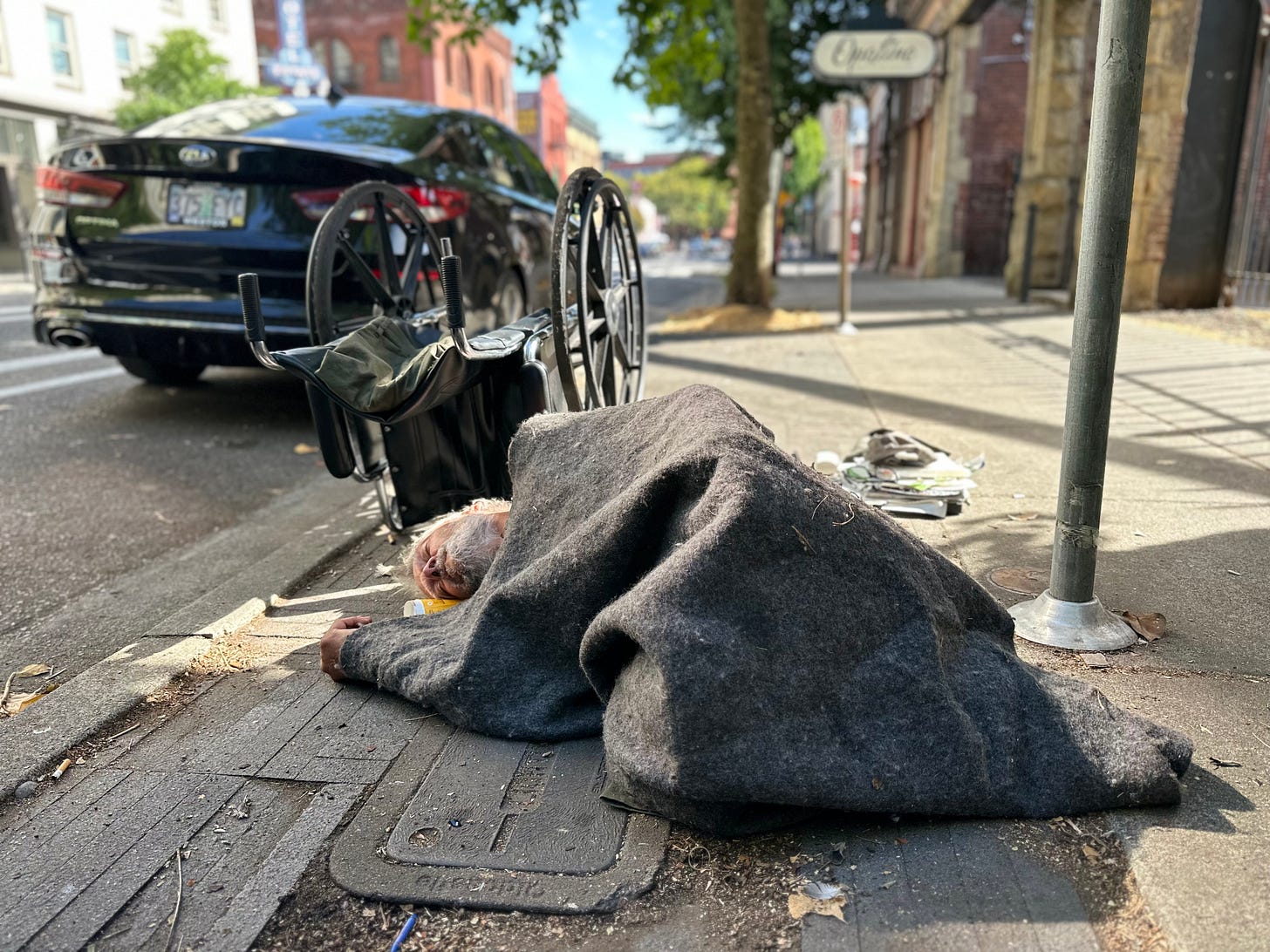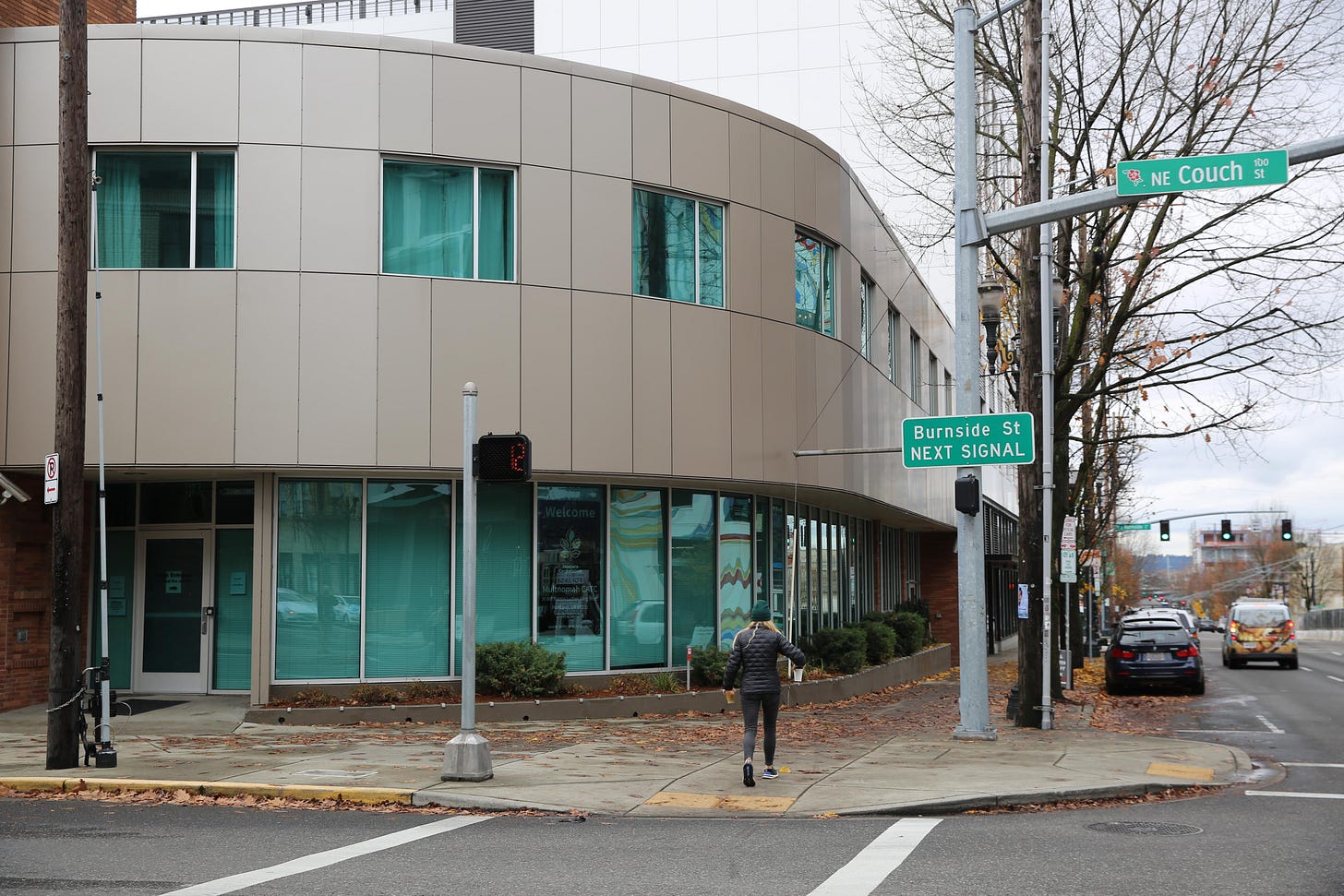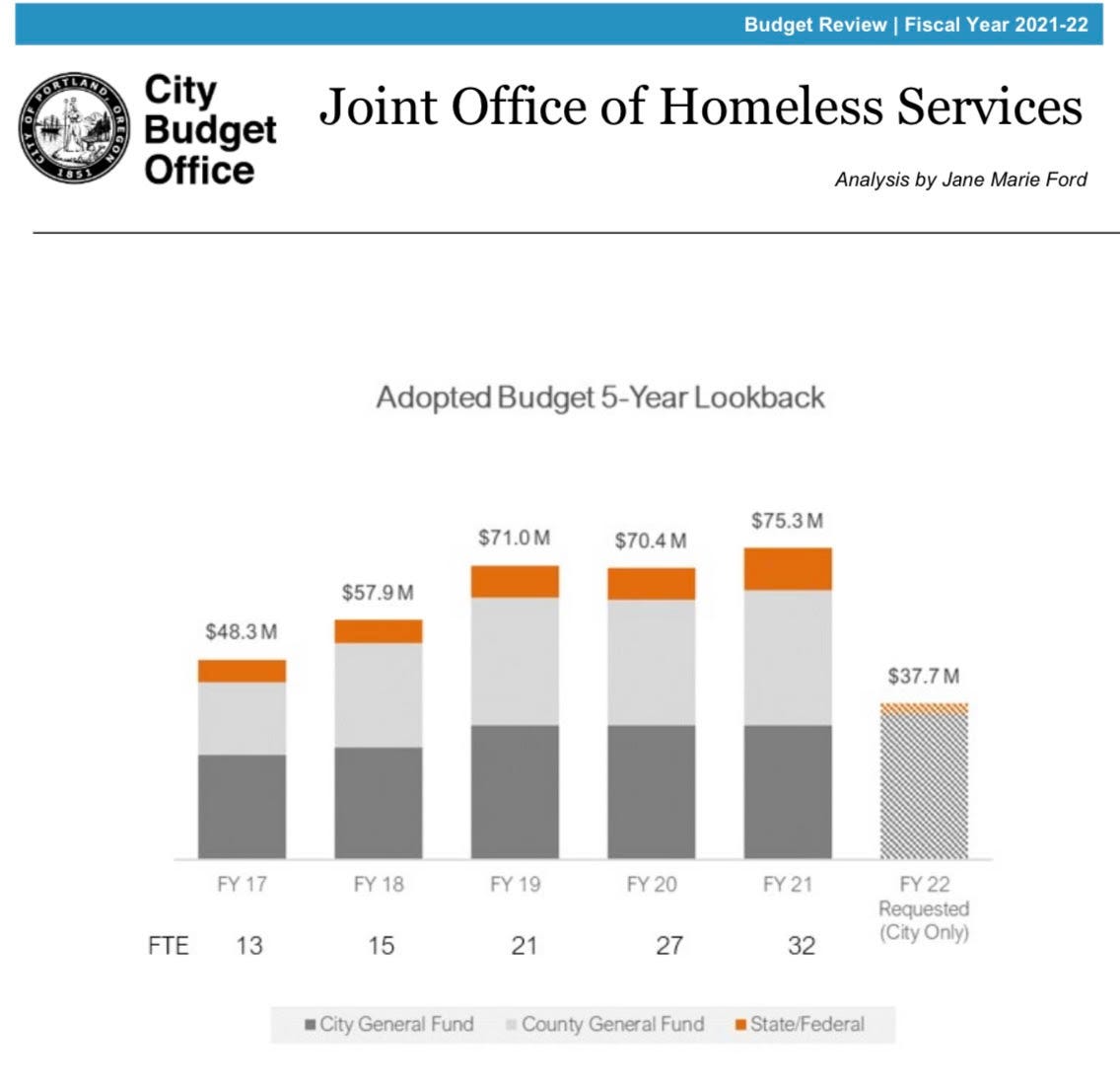Enabling is more profitable than empowering
Why the Homeless Industrial Complex need the homeless to remain on the streets
We have failed the homeless. We used to empower them and help them reach their fullest potential. We now enable them to the point of dependence.
I have been doing homeless outreach for decades. In the 90s, my younger brother disappeared and ended up on the streets of Portland, Oregon, with a meth addiction. He did not tell anyone about his situation; we assumed he was traveling and not staying in touch. Several months later, he called me out of the blue, telling me he was sleeping under a bush in SW Portland near a car dealership. He told me he was desperate and had not eaten in a few days and that he used his last quarter to call me.
I invited him to live with me in my tiny studio apartment on Hawthorne. He joined AA and worked closely with a drug and alcohol counselor, a housing case manager, peer support, and others. He eventually got into Oxford Recovery Housing, a recovery-based program where 6-8 men work through their recovery in the same household. He eventually got a job in social service, working for Hooper Sobering. He then returned to school and today has a great job, home, and a beautiful child. He continues to give back to the community that saved him.
My brother received services that helped him with all his barriers, and eventually, he became entirely self-sufficient. This happened because, at the time, the County, the city, the state, and most non-profit and faith-based programs had a common goal. To end the crisis.
When the system started to change for the worse
In 2011, things changed. I started working at the Crisis Assessment Treatment Center (CATC), a new mental health-locked sub-acute built in response to a homeless man freezing to death on the streets of Portland, Oregon. The program had 16 beds and was funded equally by the county and the city.
On day four, we received a call from the county asking us to discharge our first client. He was street homeless, suicidal, and had substance abuse issues. I was the discharge planner and had not yet identified a place for him to go that was not back to the streets. Regardless, we discharged him that day, and by that evening, he was back in the hospital and requested to return to our program. I realized we were about to become like most other programs that offer three hots and a cot for a few days without making any meaningful difference. We were about to become just another spoke in the social service wheel.
The next day, I met with leadership and asked them not to discharge anybody from that point on until I successfully identified housing. This would require keeping some people longer, but in the long term, we would be making a meaningful difference. They agreed, and despite early pushback from the city and county, we became a program that was part of the solution.
Over the next three years, over 1300 of the county’s most complex clients came through the doors of the CATC, and everyone was given a housing option. A small percentage did return to the street by choice, but a majority accepted housing, and we became a small program making significant differences.
We were a rare example. From that point on, many newly elected mayors, city councilors, county commissioners, state representatives, and others in some states began reallocating money to programs not focused on the permanent solution but instead to providers who convinced them it was better to keep a person comfortable on the streets rather than getting them into housing and helping them reach their fullest potential. The CATC program survived in those times only because we “went rogue” and risked losing our jobs. Most others lost funding and were soon gone.
Homelessness is a hot-button issue and has become very political. Progressives argue that homelessness will never end until capitalism is abolished. To them, anyone on the streets is a victim of capitalism and thus, as a victim, cannot be expected to make changes that are not their fault. Activists within the Progressives Party have argued that all bad behavior committed while living on the streets is justified because capitalism is why it exists—things like person-to-person crimes, theft, drug dealing, and others. Once capitalism is abolished, homelessness will end, all destructive behaviors will stop, and the world will live in complete harmony.
Moderates and conservatives see homelessness as a complex issue primarily caused by addiction, mental illness, and other external factors. They see value in empowering these people and giving them the proper guidance and support to become self-sufficient and productive members of society.
I live in Multnomah County, the largest county in Oregon. They adopted radical social justice causes about a decade ago. They went from trying to get people experiencing homelessness off the streets and helping them become self-sufficient to promoting a person’s right to be homeless and to use. Every 1-2 years, their budget has grown. The money has been reallocated and given to specific non-profits that aim to keep people comfortable on the streets rather than helping them leave the streets.
This was happening as the inflow of homeless from other communities increased. The most common reasons for this inflow are more services, lax policies on homelessness, and the decriminalization of drugs. This is why, despite big budgets and more non-profits in the homeless sector now than at any other time in history, we continue to see a significant increase in homelessness.
This humanitarian crisis has become a multi-billion-dollar industry. Homelessness has now exploded to crisis-type levels. You can talk to any homeless person in a concentrated area, and they will tell you they find two to five bodies a week. Most die from overdoses, suicides, and murders. To the others still trying desperately to stay alive, hope has plummeted to the lowest point I have ever seen. The current social service system still has no plan to end homelessness. In the early 1990s, when I started my career, we always talked about finding a permanent solution. Eventually, though, with a lack of results, money started to get reallocated towards keeping the homeless more comfortable on the streets until there was a better plan. Over time, though, the non-profits that benefited from this new initiative grew and became powerful. These non-profits got very involved in politics and started to support the candidates who supported their programs. Once they were elected, the plan to end homelessness was no longer on the agenda and was the beginning of the Homeless Industrial Complex.
We have reached a point in this crisis where it will take a bold FEMA-type response to reduce homelessness to a manageable level. In the meantime, I have been documenting this crisis by interviewing and photographing the homeless to raise awareness.
This woman I met in Central Oregon broke down when I asked about her family.
I took this photo of a marine veteran who served in the Iraqi war and is now homeless with zero hope.
This is a man I met in the middle of winter who told me he expected to be dead in a week. I have been looking for him for months.
This older gentleman I met has been homeless his entire life and just now says he regrets the
Keep reading with a 7-day free trial
Subscribe to Truth on the Streets to keep reading this post and get 7 days of free access to the full post archives.











